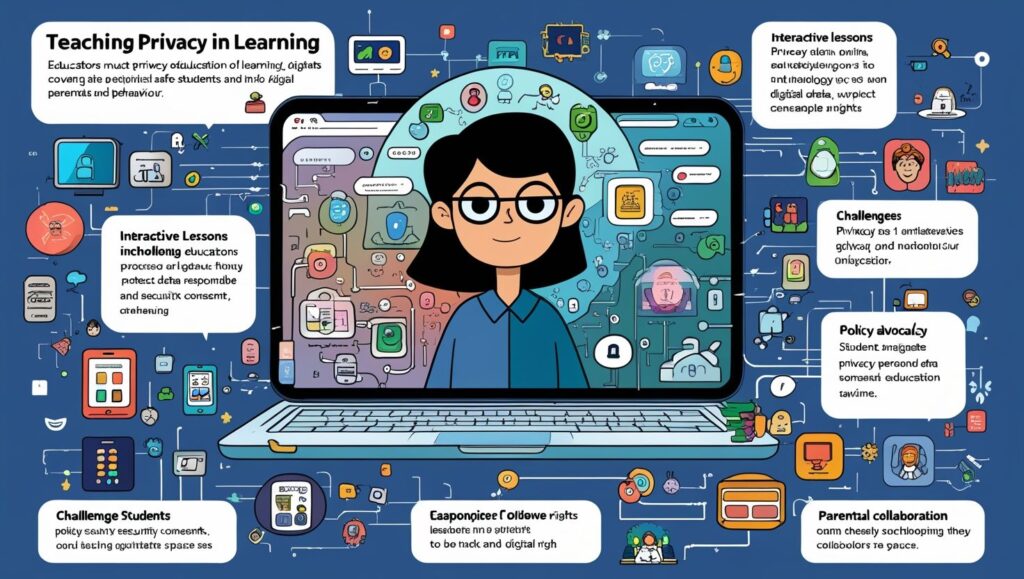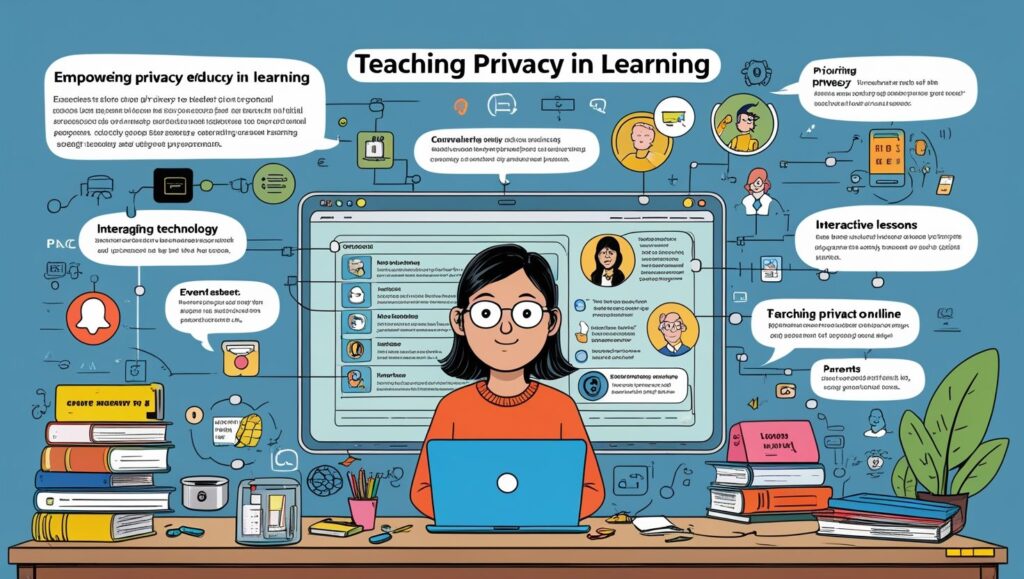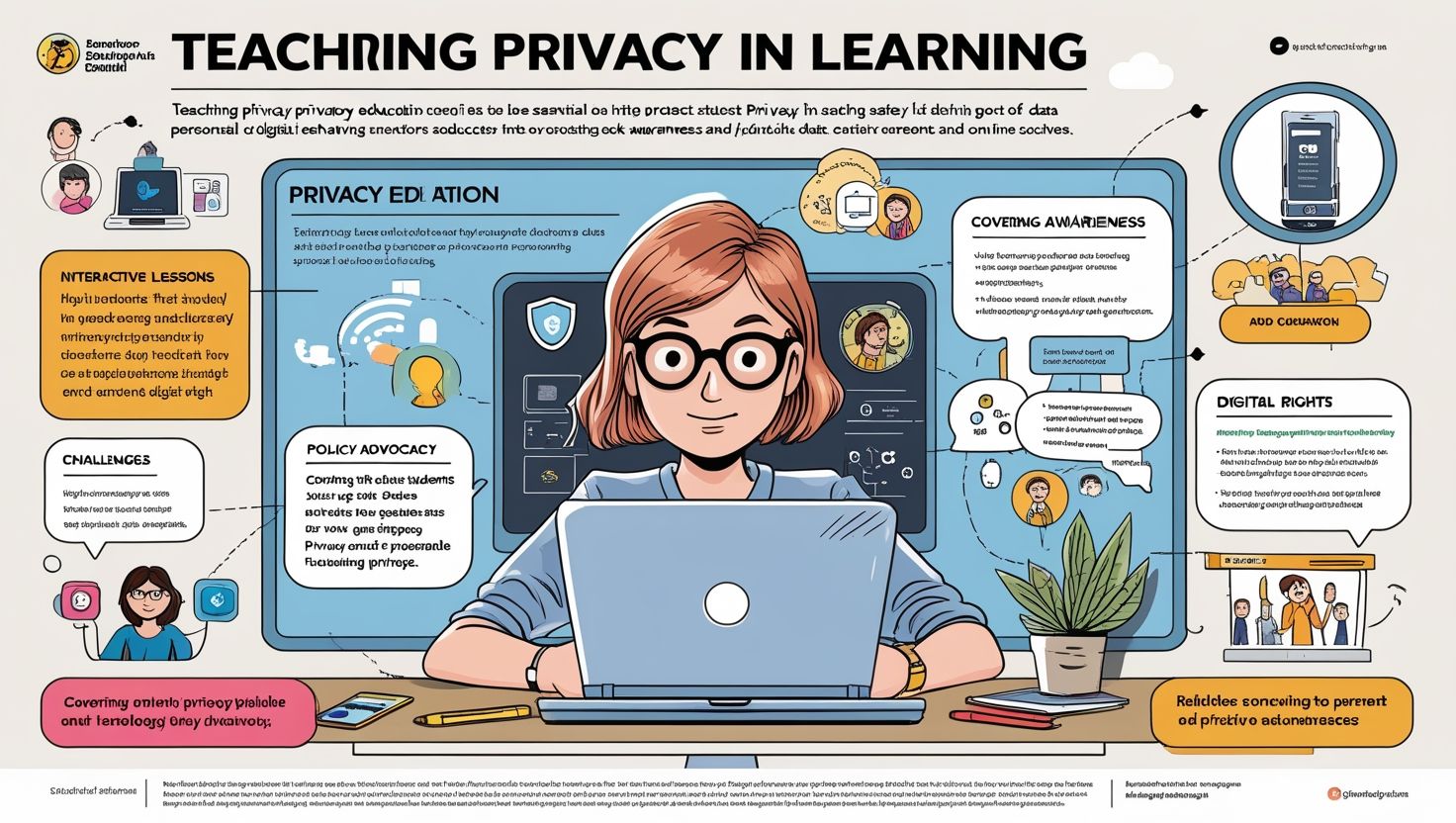Introduction
Teaching Privacy in Learning and Digital Age, In today’s digital era, education has expanded beyond traditional classrooms to online platforms, digital tools, and data-driven learning systems. While technology enhances accessibility and personalization, it also raises significant concerns about student privacy. Educators, institutions, and policymakers must prioritize teaching privacy in learning to ensure students understand how to protect their personal information and navigate digital spaces securely.
This article explores the importance of privacy education, key concepts to teach, challenges in implementation, and best practices for fostering a privacy-conscious learning environment.
The Importance of Teaching Privacy in Learning
1. Rising Digital Footprints
Students today generate vast amounts of data through learning management systems (LMS), educational apps, and online assessments. Without proper awareness, they may unknowingly expose sensitive information, making them vulnerable to data breaches, identity theft, or misuse of personal data.
2. Legal and Ethical Responsibilities
Laws such as the Family Educational Rights and Privacy Act (FERPA) in the U.S. and the General Data Protection Regulation (GDPR) in the EU mandate the protection of student data. Schools and educators must comply with these regulations while also teaching students about their digital rights.
3. Cyber Threats and Online Safety
Cyberbullying, phishing scams, and predatory behavior are real risks for students. Privacy education helps them recognize threats and adopt safe online behaviors.
4. Empowering Digital Citizenship
Understanding privacy is a cornerstone of digital citizenship. Students who grasp the implications of data sharing are better equipped to make informed decisions online.

Key Privacy Concepts to Teach in Education
1. Personal Data Awareness
Students should learn:
- What constitutes personal data (names, addresses, emails, biometric data, etc.).
- The difference between public and private information.
- How data is collected, stored, and used by educational platforms.
2. Consent and Data Sharing
- The importance of reading privacy policies before using apps or websites.
- How to adjust privacy settings on social media and learning tools.
- The risks of oversharing personal information online.
3. Cybersecurity Basics
- Creating strong passwords and using multi-factor authentication.
- Recognizing phishing emails and malicious links.
- Securing devices with encryption and antivirus software.
4. Understanding Digital Surveillance
- How schools and companies monitor online activity.
- The ethical implications of surveillance in education.
- Balancing safety with privacy rights.
5. Rights and Regulations
- An overview of FERPA, GDPR, and COPPA (Children’s Online Privacy Protection Act).
- How to report privacy violations.
- The role of parents and guardians in protecting student data.
Challenges in Teaching Privacy in Education
1. Lack of Teacher Training
Many educators are not adequately trained in digital privacy, making it difficult to teach these concepts effectively.
2. Rapidly Evolving Technology
Privacy threats and digital tools change constantly, requiring continuous updates to curricula.
3. Student and Parent Awareness Gaps
Some students and parents underestimate privacy risks, assuming schools and platforms automatically protect their data.
4. Institutional Barriers
Schools may lack resources or policies to enforce strong privacy measures, leaving students vulnerable.

Best Practices for Teaching Privacy in Learning
1. Integrate Privacy into the Curriculum
- Embed privacy lessons in computer science, social studies, and digital literacy courses.
- Use real-world examples (e.g., data breaches, social media scandals) to illustrate risks.
2. Use Interactive and Engaging Methods
- Simulations: Role-playing scenarios where students must protect their data.
- Gamification: Quizzes and challenges on identifying phishing attempts.
- Case Studies: Analyzing how companies misuse student data.
3. Collaborate with Parents and Guardians
- Host workshops on family digital safety.
- Provide resources for monitoring children’s online activity responsibly.
4. Advocate for Stronger Institutional Policies
- Encourage schools to adopt strict data protection measures.
- Promote transparency in how student data is collected and used.
5. Leverage Privacy-Focused EdTech Tools
- Use platforms with strong encryption and minimal data collection.
- Teach students how to evaluate the privacy policies of apps they use.
Conclusion
Teaching privacy in learning is no longer optional—it is a necessity in an increasingly data-driven world. By equipping students with the knowledge and skills to protect their personal information, educators can foster a generation of responsible digital citizens. Schools must prioritize privacy education through updated curricula, teacher training, and collaboration with parents and policymakers.
As technology continues to evolve, so must our approach to safeguarding student privacy. By embedding privacy awareness into education, we empower learners to navigate the digital landscape with confidence and security.


1 thought on “Teaching Privacy in Learning and Digital Age”
Comments are closed.